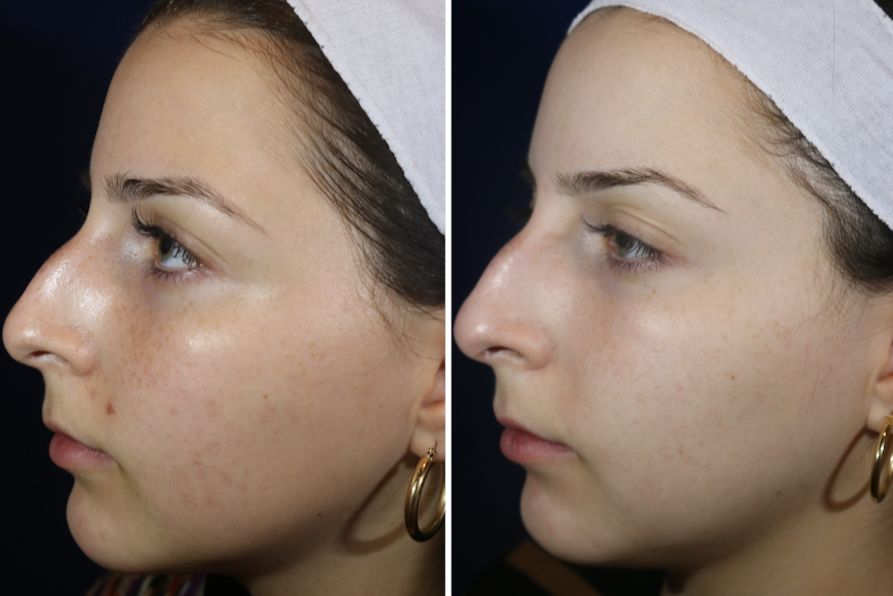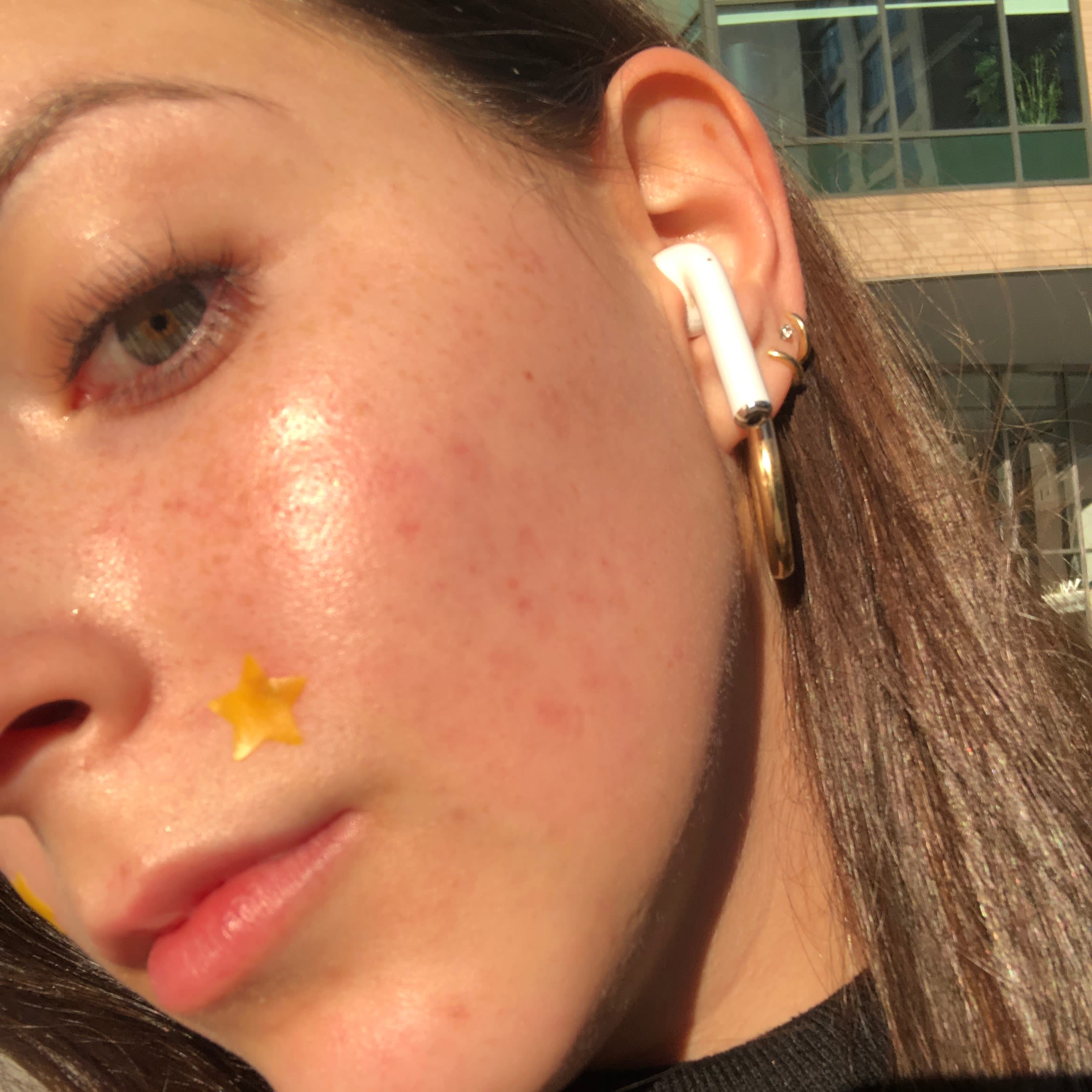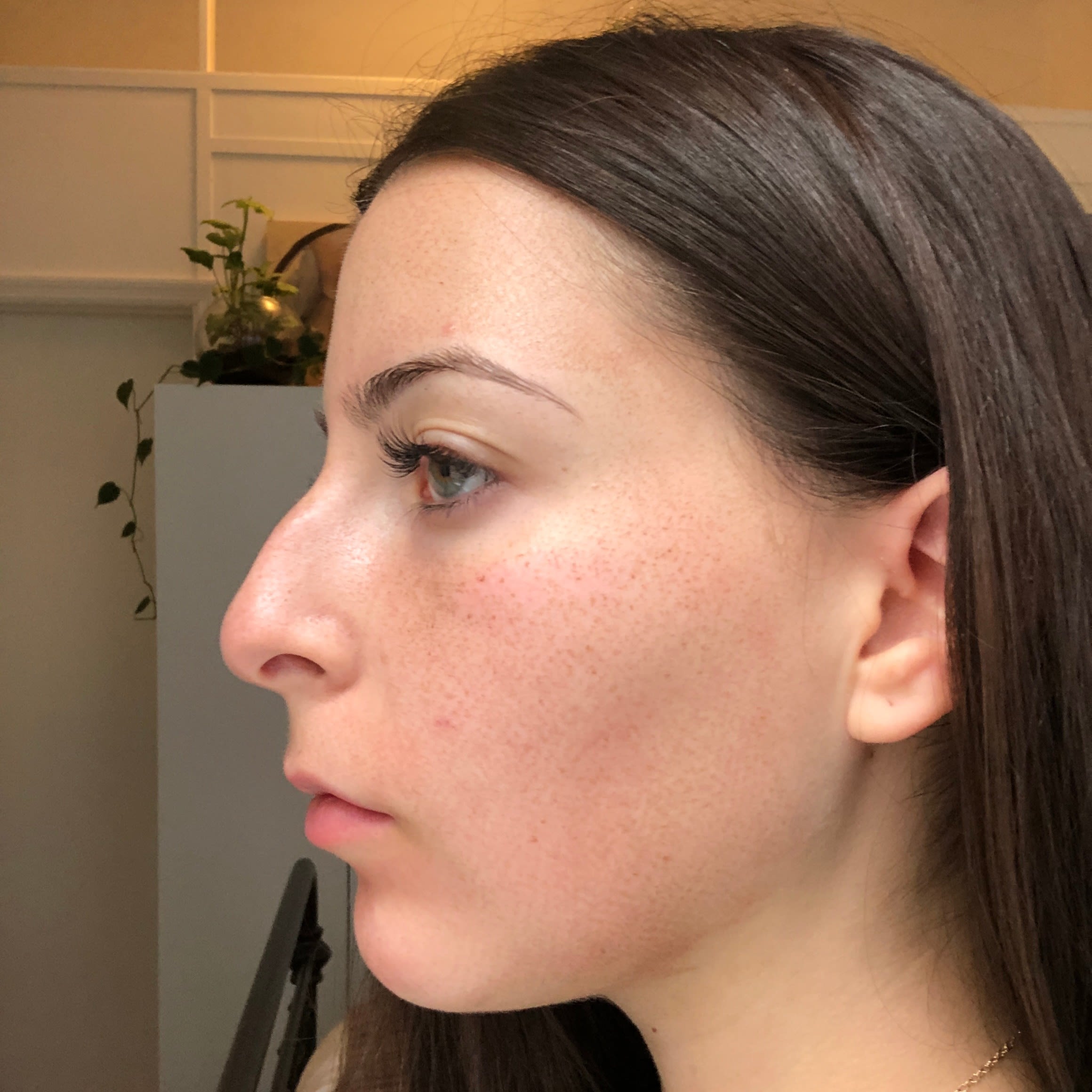Let me start by saying: I think these are the only photos of my acne scars I’ve ever shared. Most people don’t even notice I have them, partially because I don’t talk about them a lot and partially because they’re on the sides of my face, often hidden by my hair. On good days, they disappear into the shadow of my cheekbone. On bad days, they’re the only thing I see when I look in the mirror. But I should be writing this in past tense—my scars are mostly gone now, and in most lights even I struggle to locate them.
When I went to visit Dr. Y. Claire Chang at Union Square Laser Dermatology this past November, I wasn’t expecting much. I had only gone to see a dermatologist once before, to help with teenage acne, and after looking at me for one second the derm prescribed an oral antibiotic and went on his way. I ended up treating that acne on my own with a combination of birth control and effective skincare, but I was left with little indents called rolling scars all over both sides of my cheeks. They were red when I didn’t put makeup on them, cast a shadow when I did, and no amount of brightening or plumping skincare ever really took care of them. Still, when Dr. Chang examined my face (thoroughly, this time!) and suggested Fraxel, I was a little surprised.
Fraxel is a fractionated laser treatment, meaning it only treats a fraction of your skin with each session. And, at the time, I thought of it as Serious Skincare reserved for those with acne scars even more severe than mine. But Dr. Chang insisted it was the smartest move to treat my persistent marks (a mix of indentented scars, post-inflammatory hyperpigmentation and erythema, and sun damage). As far as skincare lasers go, it’s kind of Goldilocks: I didn’t need the intensity of a Co2 laser, and something less powerful (like Clear + Brilliant) would require more treatments to see the same results. So I agreed to let Dr. Chang zap my face three times, spaced about a month apart each. Here’s her answers to all your questions, but I’ve got a TLDR summary of my own four month journey here. The things you need to know are:
It’s Expensive
Union Derm charges $1,700 for each Fraxel treatment which, I believe, is on the high end of what Fraxel can cost. Speaking candidly, I could not have afforded it on my own. (I write about lipstick for a living! Come on!) My Fraxel was comped.
Your Skin Is Going To Be Super Sensitive
That means religious SPF usage and no acids, retinols, or masks. After my first treatment I’d moisturize with CeraVe cream and Aquaphor, but found that the Aquaphor wasn’t really doing anything to make my face feel more comfortable so I nixed it the next two times. An oil cleanser actually helped more. Dr. Chang also recommended a daily vitamin C under my sunscreen—I started off with a new vitamin C serum I had picked up, but on the second and third rounds went back to a powder that I knew my skin liked and would react well to. Other things I found helpful to have on hand: Aczone from Dr. Chang, Tower 28’s SOS Spray, and Face Halos for gentle exfoliation after day three.
The Fraxel Starter Kit:
It Hurts, But It’s Not That Bad
Fraxel appointments take a long time, but that’s only because you’ve got to budget time to sit around for an hour while your face numbs. Don’t skip this step! I also got a toradol (basically supercharged ibuprofen) shot in my butt cheek the first time I went, skipped it the second time, and treated with three advils the third time. The toradol helped the most, so if you’re nervous about pain after, ask for it. After the hour passed, Dr. Chang would come in and begin the laser process. She made eight passes over each section of skin, two times—one with a frequency to help with texture, and another with a frequency to help with pigment. The pigment frequency hurt more, but probably because it came second. The sensation was almost exactly what I imagined microneedling to feel like (more spiky, and not like laser hair removal at all). All in all the laser was probably on my face for no more than five minutes, and it felt like even less. If you can handle a Brazilian wax, you can handle this.
The Downtime Was Fine
I took a day to work from home after my first treatment, but actually found that my skin looked the scariest a couple days later. I covered it up with makeup once—using Jane Iredale, which I felt was safe for my post-procedure skin—but it just got too dry and uncomfortable as the day went on. Which is all to say: I don’t know where you work, and if you can’t swing looking like you fell asleep on chicken wire for a couple days you can wear makeup. If I didn’t work at a beauty company where it was OK to come back from lunch with a beet red face, I’d probably schedule it on a Friday so I could scab in peace on days two and three.
And The Right Amount Of Treatments Depends On Your Skin
I did three, but would have been happy stopping at two—the third treatment didn’t make as much of a visible difference. My freckles were mostly wiped out after the first, which I was hesitant about—I discussed skipping that area with Dr. Chang, but ultimately decided to treat it because freckles are sun damage and I knew zapping them off wouldn’t be permanent. The second gave my skin an all-over evenness (and opacity?) that I’d never experienced before. It also made me a whole foundation shade lighter! The third probably worked on lifting my scars even more, but the difference was too minimal to really tell. I still have some deeper scars left over, and some freckles have come back since, but I’m the happiest with my bare skin that I’ve ever been. That’s got to count for something!
—Ali Oshinsky
Photos via the author and Union Square Laser Dermatology














